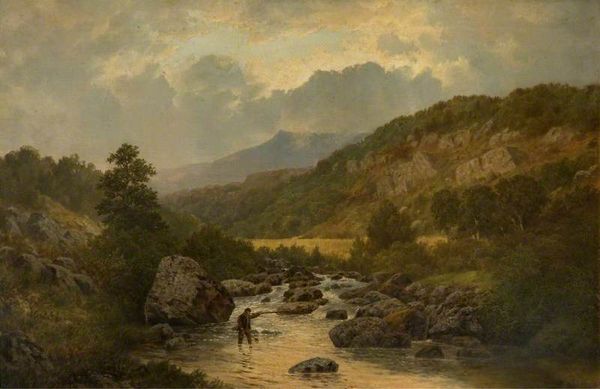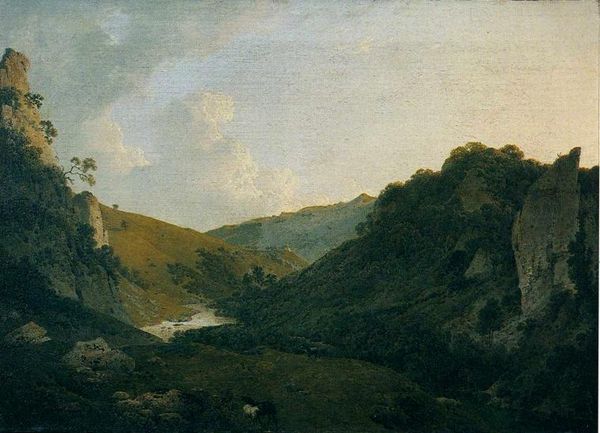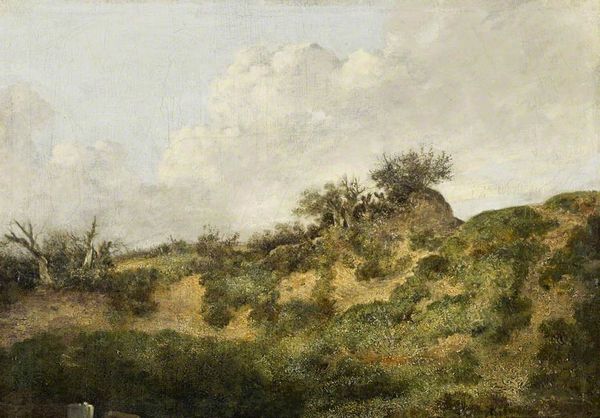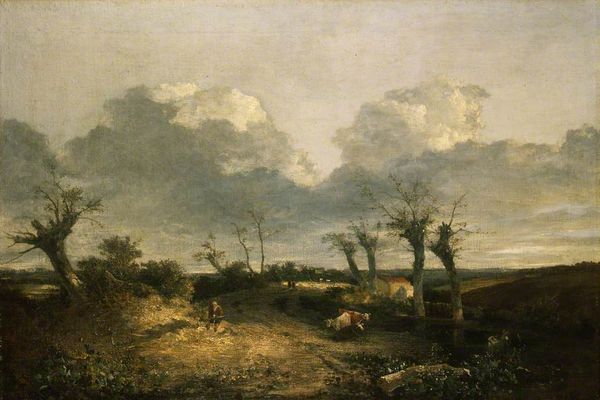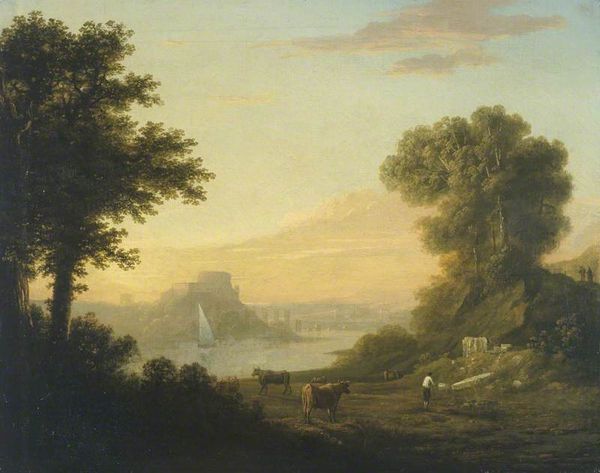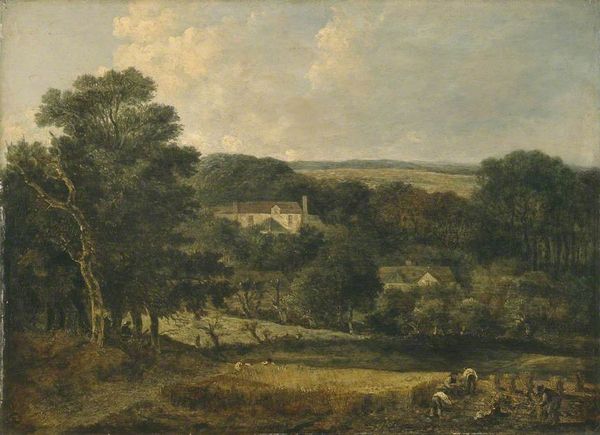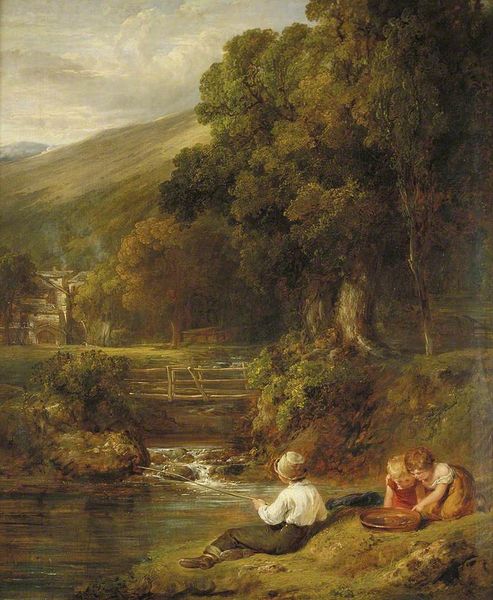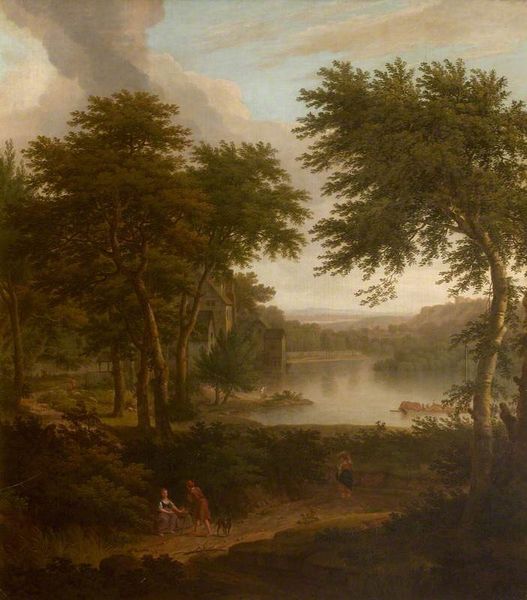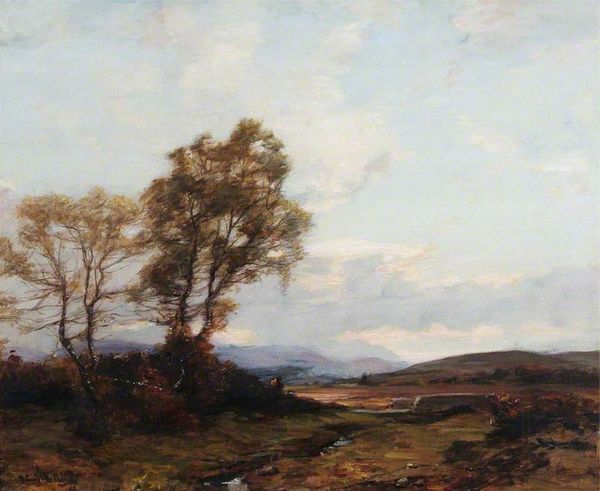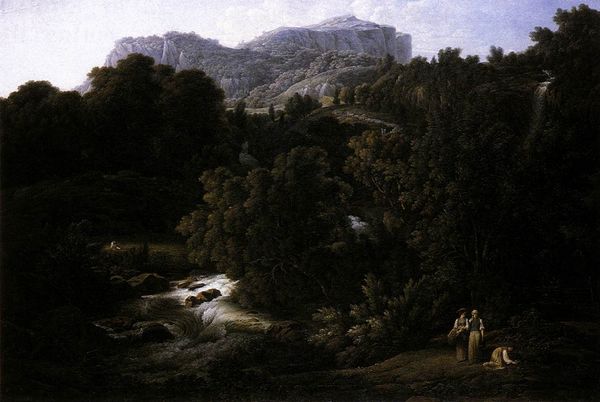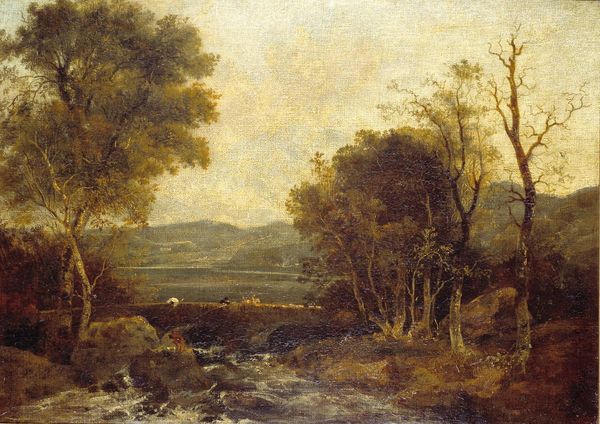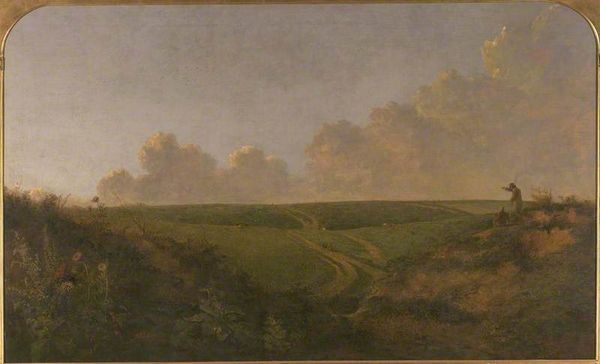
painting, plein-air, oil-paint
#
painting
#
plein-air
#
oil-paint
#
landscape
#
oil painting
#
romanticism
#
cityscape
#
realism
Copyright: Public domain
Editor: This is John Crome's "High Tor, Matlock," painted in 1811 using oil paint in the plein-air style. It evokes a sense of the sublime with its dramatic cliffs, but there’s also something quite grounded in its portrayal of the landscape. What do you see in this piece? Curator: For me, Crome’s “High Tor, Matlock” transcends a simple landscape painting. It’s an exploration of the early 19th-century British identity intertwined with nature. Notice how the industry of the time isn’t explicitly shown but implied – consider the social and economic impact of early industrialization and how it shifted perceptions of the rural, leading to a nostalgic romanticization. What narratives might the artist be subtly engaging? Editor: That's an interesting point about implied industry! I was focusing more on the natural elements, like the light filtering through the clouds. Curator: Exactly! And how does that light interact with the 'sublime' rock formations? Crome positions the natural landscape not as separate from the cultural landscape but as intimately interwoven with it. His landscapes become sites where class tensions and emerging notions of environmental awareness played out. Who do you imagine occupied the riverbank and stone structures in 1811? Editor: Probably laborers and maybe some of the early tourists visiting the area... Curator: Precisely! They were active agents shaping and being shaped by this landscape. Thinking about this image beyond just the visual and into its socio-historical framework provides us with ways to understand a society in transition. It really complicates the romantic image. Editor: I agree! I now see this painting less as just a landscape and more as a document reflecting broader societal shifts and the complex relationship between humanity and nature at the dawn of the industrial age. Curator: Indeed! It's through interrogating the assumed narratives that art becomes truly relevant and continues speaking to us today.
Comments
No comments
Be the first to comment and join the conversation on the ultimate creative platform.
